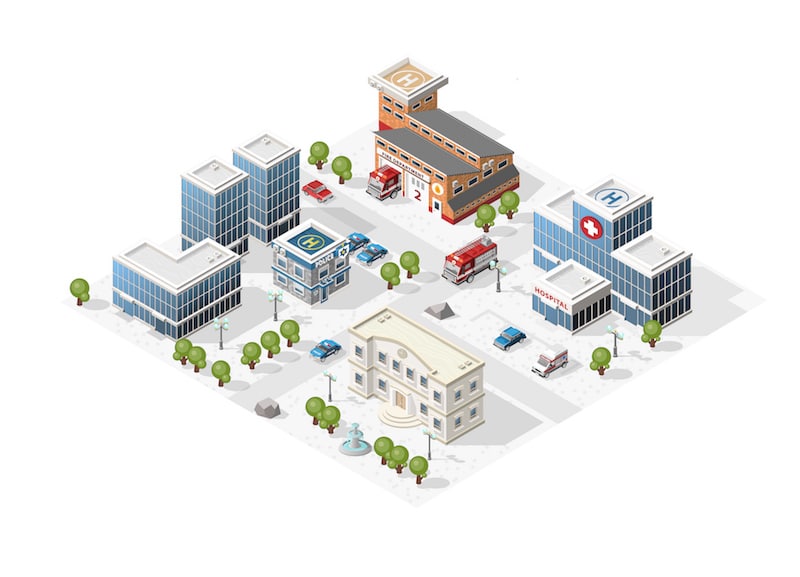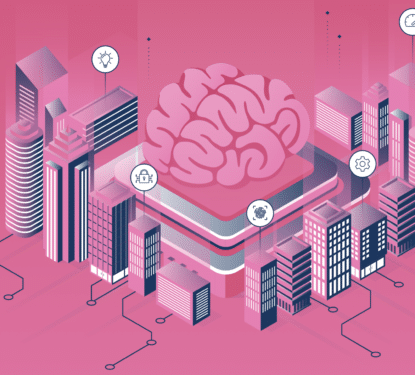“In the building industry, it is the growing view of many experts, that if we were to know exactly how a building was to perform from construction to demolition, then we could, in essence, charge for its use by the hour."

This new way of thinking starts with, and is enabled by, Building Information Modelling (BIM), which is so much more than a “model” for building construction. BIM transcends construction; it both permits user influence in the design phase and is pervasive throughout the life, to the inevitable and predictable death of a building.
“The way that I like to think of BIM is as a database that happens to be able to articulate itself in 3D, but it can also articulate itself through a number of other mediums such as drawing or schedules or reports and so on”, explained Andrew Duncan, BIM manager at Arup. “One example of where the industry could go is the Rolls-Royce model, where rather than buying an engine, you buy air miles. Maybe in the future you buy a building based on it meeting certain design criteria for a certain number of hours”.
Through the plethora of real time sensors being installed in a building, it is now possible to gauge actual performance of a building and compare it to the initial promises and predictions made by that building’s architects and engineers. As is the case with many public-private partnerships (PPP) it is possible to tie payment with actual performance of a facility and then, through the digitalisation of transactions, we can create BaaS – Buildings as a Service.
Until now individual building components such as fire safety, access control and energy monitoring have developed as “services”, but remain separate. The lack of common standards between countries and regions for measuring building performance criteria has created an obstacle for the development of digital construction and BaaS. While the standards remain a stopping-block the facility management tools are evolving. Asset management systems such as IBM’s Maximo, developed with Autodesk, offer “asset lifecycle and maintenance management” according to the tech titan.
“In order to achieve real-time databases what we need is structured, consistent data, because if we don't have sensors linked with the correct protocols back to the databases that hold that information and replay it to people who are able to make decisions regarding the effect that information is having on future designs or current occupants then we’ll get stuck in data cul-de-sacs”, explained Duncan.
The problem of creating consistency of data and universal protocols across international and industrial borders is being tackled by BuildingSMART (once known as the Alliance for Interoperability). BuildingSMART is focused on the development of OpenBIM, which promises to be an international language allowing databases, and the system that links to them, to be universally comprehensible. Such a system would represent a major step for the sector but we have, as yet, some way to go, and many issues to overcome before we see OpenBIM in action.
So what would the future of construction and facility management look like in a world where universal standards allowed for OpenBIM and BaaS? In one scenario we could imagine the melding of construction and management, where a firm would “manage what they build”. As opposed to the current situation where a construction firm sells the asset and walks away; this situation would mean the “building company” would be responsible for the entire lifecycle of the building from design to construction, management and eventual recycling.
[contact-form-7 id="3204" title="memoori-newsletter"]
In an alternate BaaS future, we may see the development of a building performance rating system linked directly to the payment. In this scenario buildings would be forced into providing increasingly high levels of service and transparency, in order to maximise profits. Under a service driven pay-per-performance system, which feeds all the way back into the design phase, we can imagine BaaS on a whole new level. It becomes the priority of the design and construction to ensure everyone has a parking space; that there are always enough meeting rooms; that maintenance is swift or even unnecessary; and so on.
A potential third scenario involves the mysterious and seemingly limitless world of Big Data in Smart Buildings. Currently we can only speculate on the potential uses of the masses of data being retrieved from the multitude of sensors almost everywhere. This endless stream of information will no doubt streamline all manner of processes throughout the building, while opening up a variety of new service and payment possibilities.
Whichever scenario, or combination of scenarios we find ourselves in, we can be relatively certain that BaaS will soon become a reality. Each imaginable future improves the building user experience, increases efficiency of building systems, raises profitability of the building entity and, no doubt, disrupts the traditional building sector.



